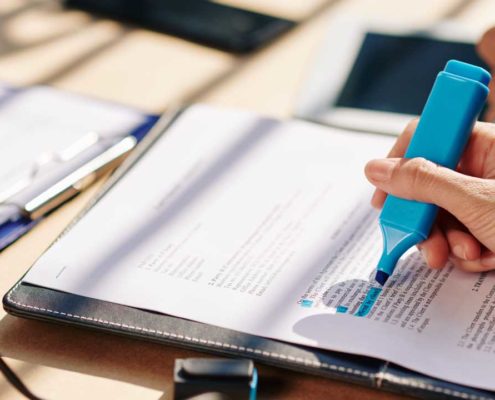 https://arquebus.uk/wp-content/uploads/2022/06/ARQ001-services_salw_thumbnail-v01.jpg
600
600
Callum Lloyd
https://arquebus.uk/wp-content/uploads/2022/02/Asset-1arquebus_logo.svg
Callum Lloyd2024-04-02 16:26:452024-04-02 16:42:51NSCS 3: State SALW Lifecycle Management
https://arquebus.uk/wp-content/uploads/2022/06/ARQ001-services_salw_thumbnail-v01.jpg
600
600
Callum Lloyd
https://arquebus.uk/wp-content/uploads/2022/02/Asset-1arquebus_logo.svg
Callum Lloyd2024-04-02 16:26:452024-04-02 16:42:51NSCS 3: State SALW Lifecycle ManagementOf the 1 billion firearms in global circulation as of 2017, 156 million (15%) are in the possession of state agencies. SALW are the primary holding of military arsenals, being a necessary tool for state defence forces to guarantee the population’s security. Likewise, law enforcement requires SALW to properly enforce the rule of law within their jurisdiction, maintaining the states legitimate monopoly on the use of force and for maintaining human security.
While it is essential that militaries and law enforcement possess the tools they need to properly protect civilians, it is equally important that they respond appropriately to mitigate potential diversion and subsequent misuse of state owned SALW. This means that SALW should be handled by professionally trained forces, used sparingly and with care, and, crucially, are adequately managed throughout their lifecycles to prevent them falling into illicit circulation, to prevent their misuse by criminals and non-state armed groups.
Central to effective lifecycle management of SALW is comprehensive record-keeping. This refers to the maintenance of records for SALW under the authority of government agencies, through utilising a state digital SALW registry and, if appropriate, a digital armoury accounting system. These systems empower authorities to effectively manage the SALW in state possession, enabling them to understand the status of SALW, pinpoint their expected and last known locations, and track their transactional movements over time whilst fully understanding their characteristics at every step of the lifecycle.
Effective record-keeping affords authorities the necessary oversight and accountability to effectively manage state-owned stockpiles of SALW, whilst giving them greater understanding of the specific mechanisms and circumstances of potential diversion into illicit circulation. The UN Programme of Action and the International Tracing Instrument outlines the common minimum standards for the maintenance of manufacturing and import/export records. The necessity of record-keeping is also recognised in Article 7 of the UN Firearms Protocol, which requires “each State Party [to] ensure the maintenance, for not less than ten years of information in relation to firearms…that is necessary to trace and identify those firearms.”
Research echoes this sentiment. A policy brief on stockpile management practices in Sub-Saharan Africa published by SIPRI in August 2022 stipulates that successful state SALW control begins with “…effective and verifiable record-keeping.” Based on Arquebus’ own experience in assisting states with the lifecycle management of their SALW stockpiles, record-keeping systems should possess the following features:
- A digitalised system that allows multiple organisations in a jurisdiction to account for their stockpiles, in addition to assigned and returned weapons. Integration with identity management systems to validate the identity and suitability of personnel attempting to access state-owned SALW.
- Security measures such as two-factor authentication and comprehensive audit logs to deter against the potential SALW diversion. Information such as SALW type, serial number, model, manufacturer, calibre, action, and country of origin, as well as additional data regarding SALW components, accessories, and ammunition.
- Data on each transactional step SALW take from manufacture or import to destruction or export. Digital records of loss/stolen and recovered/seized SALW and their corresponding locations if known.
- Ballistic fingerprinting records of state-owned firearms to enable the identification of SALW diverted into illicit circulation.
- Integration of an appropriate reference table to ensure clean data entry and to facilitate domestic and international tracing.
While most states engage in the record-keeping of SALW, many national authorities lack the necessary expertise, technology, and resources to develop and deploy high-fidelity digital registry systems. For instance, our research indicates that many SALW registries across the African and South American continents are paper-based and not fit-for-purpose, being liable to environmental damage, corruption, and human error, whilst also being administratively burdensome to maintain.
When the necessary steps by authorities are not taken to ensure effective lifecycle management of SALW, the consequences to human security can be severe. The diversion of state-owned SALW into illicit circulation can supply malignant actors engaged in SALW misuse, as well as act as a currency for criminal organisations and non-state armed groups. In particular, the diversion of military-grade SALW can exacerbate both national and regional security, sustaining armed conflicts and instability.
A notable case can be found in Nigeria, where a 2019 report by the Auditor General found that total of 178,459 firearms and ammunitions had been lost from police armouries, of these, 88,078 were AK-47 rifles. Although these numbers were disputed by the authorities, and some of these firearms and ammunition were legitimately lost or stolen, the scale of the losses, coupled with numerous reports of deliberate leakage by police officers, indicates that a considerable proportion of these missing weapons are likely to have been diverted to unauthorised users.
This came at a time of growing insecurity in the country. A 2020 study by Conflict Armament Research (CAR) suggests that armed inter-communal violence between pastoralist and agrarian communities in Nigeria’s North and Central Belt has killed more than 3,600 people and displaced an additional 300,000 since its resurgence in 2014, arguably constituting the deadliest conflict in the West Sahel. The same paper indicated that many combatants engaged in this conflict used weapons and ammunition that was originally lost, stolen, or captured from Nigeria’s national stockpiles.
Such instances of large-scale diversion of state-owned SALW typically occur where there are no robust record-keeping systems in place. Lifecycle management via digital record-keeping represents a fundamental aspect to a national SALW control strategy, deterring corrupt officials seeking to divert SALW into illicit circulation and giving authorities a clear audit trail regarding the movements of SALW under their jurisdiction. This serves to detect diversion and disrupt bad actors, combatting the illicit proliferation and misuse of state SALW at a national level, whilst also contributing to regional security through preventing illicit trafficking of diverted state SALW beyond their own borders.
Going forward, next month’s blog post will consider the importance of ballistics forensics in producing tactical and strategic intelligence on SALW-related criminality and the role it must play in a national SALW control strategy.








